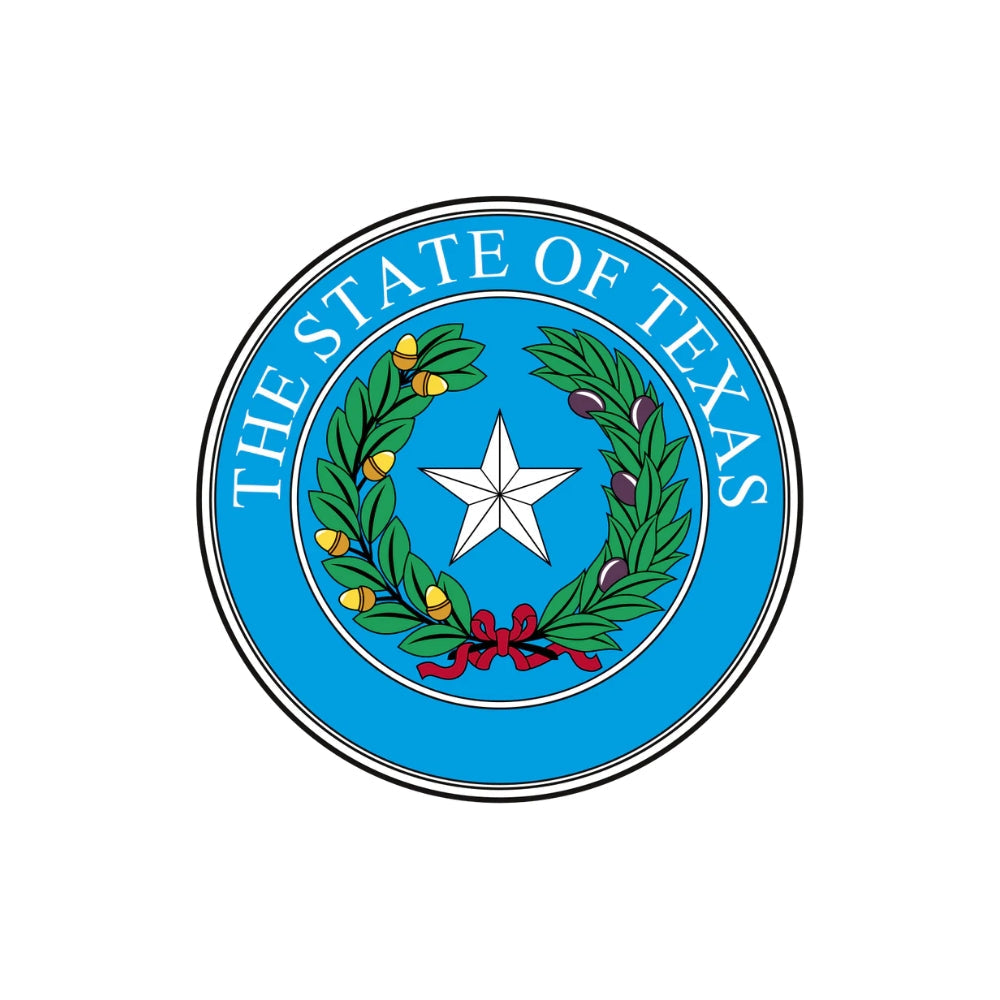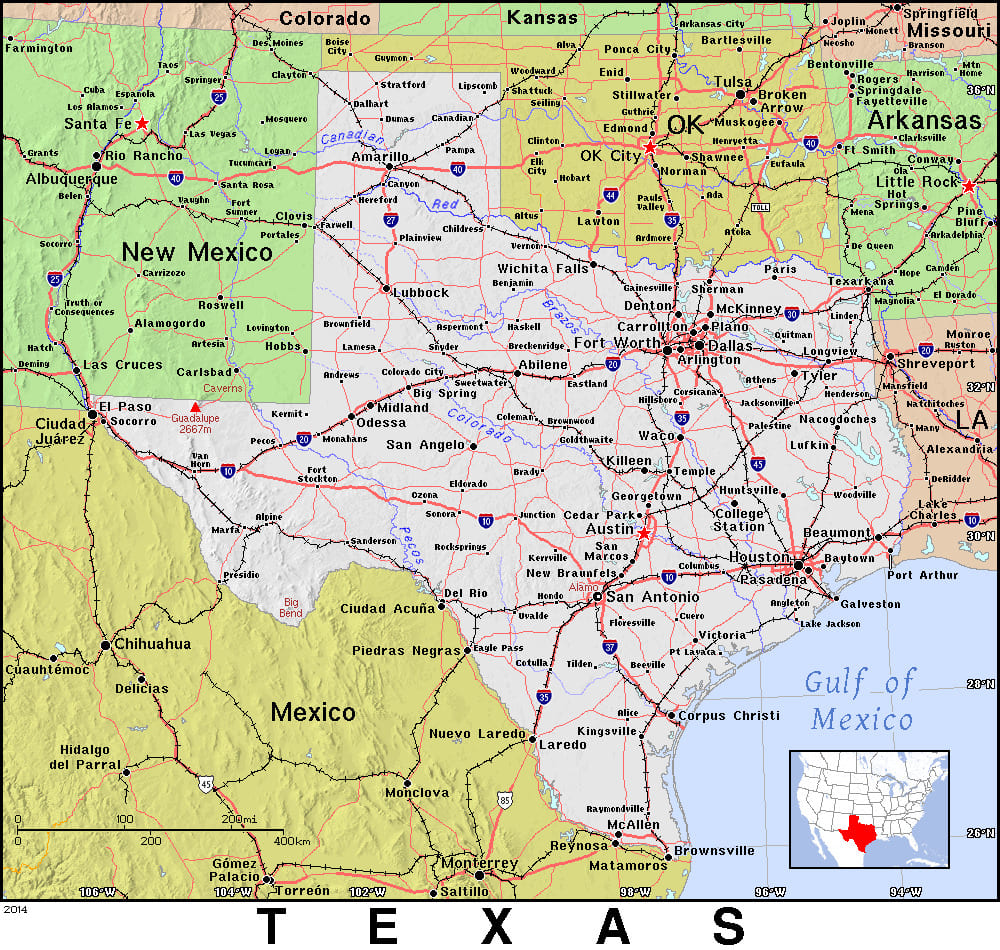Explore the Fascinating History of Texas
Take our Alabama Trivia Quizzes for a Chance to Win a 6-Month Subscription to History By Mail!

The History of Texas
Journey Through Texas Trivia
Welcome to our Texas history and trivia page, presented by History By Mail. Join us as we embark on a journey through the captivating past and cultural tapestry of the Lone Star State. From the early indigenous tribes, such as the Coahuiltecan and Caddo peoples, to the arrival of European explorers and the modern era, we'll delve into Texas's hidden gems and challenge your knowledge with entertaining quizzes. Let's uncover the rich history and intriguing trivia of Texas together.
Texas, known as the Lone Star State, is a land of extraordinary history and diverse landscapes. From the Spanish colonial era and the fight for independence to its vast prairies, rolling hills, and rugged deserts, Texas holds a captivating legacy. From the iconic Alamo in San Antonio and the historic missions of San Antonio Missions National Historical Park to the breathtaking beauty of Big Bend National Park and the Gulf Coast beaches, the state showcases a blend of historical landmarks, outdoor adventures, and a deep connection to its frontier heritage.
Join us as we unravel the intriguing history and trivia of Texas, delving into its role in the Texas Revolution, the establishment of major cities like Houston and Dallas, and the fascinating stories that make it a unique and cherished part of our nation's heritage.
Facts about Texas
State Abbreviation: TX
Capital: Austin
Name Origin: It’s said that the Caddo tribe greeted Spanish settlers by saying Tay-yas, which means “friends”—and sounds like “Texas.”
Nickname: The Lone Star State
Statehood: December 29, 1845 (28th State)
State Motto: “Friendship”

Texas' Flag
The state flag of Texas is an iconic symbol that embodies the rich history and spirit of the Lone Star State. Designed by Dr. Charles B. Stewart, the flag features a bold vertical blue stripe on the left side, which represents loyalty. Centered on the blue stripe is a large, white, five-pointed star, often referred to as the "Lone Star." This Lone Star symbolizes Texas as an independent state.
The rest of the flag consists of two horizontal stripes: a white stripe above and a red stripe below. The white stripe signifies purity, while the red stripe represents bravery and courage. These colors are a nod to the flag of the Republic of Mexico, which Texas was once a part of.
Texas' Great Seal
Texas's Great Seal, established in 1836 following its independence from Mexico, powerfully embodies the state's sovereignty and essence. Central to the seal is the "Lone Star," a large five-pointed star, symbolizing unity and resilience. Six smaller seals encircle it, each representing the flags that have flown over Texas - a testament to its diverse heritage. A surrounding ring reads "The State of Texas" and "E Pluribus Unum," signifying unity within diversity. Positioned above, a five-pointed star denotes Texas's place among the United States.

--- State Trivia #1 ---
History of Texas
Texas boasts a rich and diverse history, spanning thousands of years. Evidence of human habitation in the region dates back over eleven thousand years. The area was inhabited by various indigenous cultures, including the Puebloan, Mississippian, and Mesoamerican peoples. By the time of European colonization, Texas was home to six major culture groups, such as the Comanche, Atakapa, Coahuiltecan, Puebloan, Apachean, and Caddoan peoples.
The name "Texas" originated from the Hasinai word for "allies," reflecting the Spanish designation for their alliance with the Hasinai tribe as "tejas." Spanish explorers like Álvar Núñez Cabeza de Vaca and Francisco Vásquez de Coronado first explored the region in the 16th century. However, it wasn't until the 17th century that the French established a short-lived colony at Matagorda Bay, prompting Spanish interest in the area.
Over the next century and a half, the Spanish established numerous missions and towns throughout Texas, navigating complex alliances and rivalries with various Native American nations. Texas served as a buffer zone between competing French and Spanish colonial territories and became a disputed area following the Louisiana Purchase.
In 1821, Texas became a part of Mexico after the country gained independence from Spain. To encourage settlement and counter Comanche raids, Mexico implemented a land grant program that attracted American immigrants led by Stephen F. Austin. Tensions arose between the American settlers and the Mexican government, particularly regarding the issue of slavery. In 1836, Texas declared independence from Mexico, leading to the establishment of the independent Republic of Texas after the famous battles of the Alamo and San Jacinto.
Texas joined the United States as a state in 1845, but border disputes sparked the Mexican-American War from 1846 to 1848. During the Civil War, Texas sided with the Confederacy, but pockets of pro-Union sentiment existed within the state. After the war, Texas experienced economic transformation with the discovery of oil, leading to a boom in the oil and shipping industries. The state also witnessed military expansion during World War II and welcomed Mexican agricultural workers through the Bracero Program.
Today, Texas is a popular tourist destination, with millions of visitors exploring its diverse attractions. From the Gulf Coast resort area to the Lyndon B. Johnson Space Center, the historic Alamo, the state capital in Austin, and the stunning natural landscapes of Big Bend and Guadalupe Mountains National Park, Texas offers a wealth of experiences for visitors to enjoy and appreciate.
State Symbols
Fun Facts
- Juneteenth, the federal holiday that celebrates freedom for enslaved people, started in Texas.
- Frontiersman and politician Davy Crockett moved to Texas around 1835 and died while fighting at the Alamo. Two U.S. presidents were born in Texas: Dwight D. Eisenhower and Lyndon B. Johnson. Houston’s Johnson Space Center, also known as Mission Control, carries President Johnson’s name.
- Because it’s so close to Mexico, Texans have developed a cuisine that’s a mix of Mexican food and American cooking called Tex-Mex.
- Want to feel like a cowboy? Visit one of Texas’s thousands of ranches and rodeos.
- Six flags have flown over Texas: British, French, Mexican, Texan, United States, and Confederate. That’s how Six Flags amusement park got its name!
--- State Trivia #2 ---

Things To Do in Texas
- Explore the Cultural Diversity of Houston: Visit the vibrant city of Houston, known for its diverse communities and rich cultural offerings. Explore the Museum District, which houses world-class institutions like the Museum of Fine Arts and the Houston Museum of Natural Science. Enjoy authentic international cuisine in the city's diverse neighborhoods and experience the lively arts and music scene.
- Discover the Historic San Antonio River Walk: Take a stroll along the famous San Antonio River Walk, a picturesque waterway lined with shops, restaurants, and entertainment venues. Explore the historic missions, including the iconic Alamo, and learn about the city's role in Texas history. Don't forget to indulge in delicious Tex-Mex cuisine along the way.
- Experience the Natural Wonders of Big Bend National Park: Immerse yourself in the breathtaking landscapes of Big Bend National Park. Hike through scenic trails, marvel at towering canyons, and take in stunning views of the Rio Grande. Camp under the starry skies, birdwatch in the diverse ecosystems, and witness the vibrant desert flora and fauna.
- Enjoy the Beaches of South Padre Island: Head to South Padre Island, located on the Gulf Coast, for a sun-soaked beach getaway. Relax on the pristine sandy shores, go fishing or boating in the Gulf of Mexico, or indulge in water sports like jet skiing and parasailing. Don't miss the opportunity to observe sea turtles at the Sea Turtle Inc. conservation center.
- Immerse Yourself in the Live Music Scene of Austin: Experience the vibrant live music scene in the capital city of Austin. Explore the famous Sixth Street entertainment district, where you can enjoy live performances ranging from country and blues to rock and indie. Visit iconic music venues like the Continental Club and catch a show at the legendary Austin City Limits Live.

General Map of Texas
Texas, known as the "Lone Star State," is a captivating destination located in the southern region of the United States. Renowned for its vast expanses, diverse ecosystems, and vibrant culture, Texas offers a wealth of experiences for visitors to explore and enjoy.
Famous People From Texas
--- State Trivia #3 ---
FREQUENTLY ASKED QUESTIONS (FAQ) ABOUT TEXAS
The name "Texas" comes from the Caddoan word "tejas," which means "friends" or "allies." The Spanish explorers in the 16th century used this term to refer to the area and its indigenous peoples. Texas was originally a part of New Spain, then Mexico, and finally an independent republic before joining the United States in 1845.
The Texas Revolution (1835-1836) led to Texas gaining its independence from Mexico. The most famous event during this period was the Battle of the Alamo, where a small group of Texan defenders valiantly held out against Mexican forces. Texas declared its independence on March 2, 1836, and the Texan army under Sam Houston achieved a decisive victory at the Battle of San Jacinto on April 21, 1836, leading to the capture of Mexican General Santa Anna and securing Texas's independence.
Texas was a part of the Confederacy during the American Civil War (1861-1865). It joined the Confederate States of America in 1861, and many Texans fought for the Confederate cause. The state contributed troops, supplies, and leaders to the Confederacy. After the war, Texas went through a period of Reconstruction and eventually rejoined the Union in 1870.
Texas was once an independent nation known as the Republic of Texas. It gained its independence from Mexico in 1836 and remained an independent country until it joined the United States in 1845. This short-lived nation had its own president, Sam Houston, and its own currency.
Related Resources
- Official Website of the State of Texas: The official website provides information about state government services, business resources, travel, and more. Visit: https://www.texas.gov/
- Texas Tourism: Explore Texas' attractions, events, outdoor activities, and plan your trip. Visit: https://www.traveltexas.com/
- Texas Historical Commission: Learn about Texas' rich history, historic sites, preservation efforts, and educational resources. Visit: https://www.thc.texas.gov/
- Texas Parks and Wildlife: Discover Texas' diverse natural resources, state parks, trails, wildlife, and conservation initiatives. Visit: https://tpwd.texas.gov/
- The Alamo: Explore the historic site of the Alamo, an iconic landmark in San Antonio and a significant part of Texas history. Visit: https://www.thealamo.org/
- Space Center Houston: Learn about space exploration and visit the official visitor center of NASA's Johnson Space Center. Visit: https://spacecenter.org/
- Texas State Capitol: Discover the impressive Texas State Capitol building in Austin, which houses the state's government and showcases architectural beauty. Visit: https://tspb.texas.gov/plan/tours/tours.html
- Texas Music Office: Learn about Texas' rich musical heritage, artists, music events, and resources. Visit: https://gov.texas.gov/music
- Texas State Fair: Experience the excitement of the annual Texas State Fair, known for its entertainment, livestock shows, and delicious food. Visit: https://bigtex.com/







